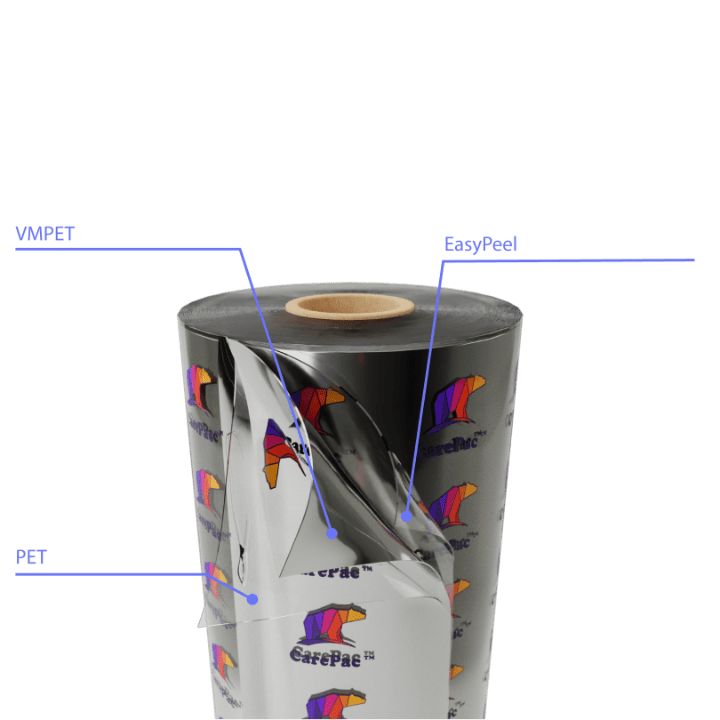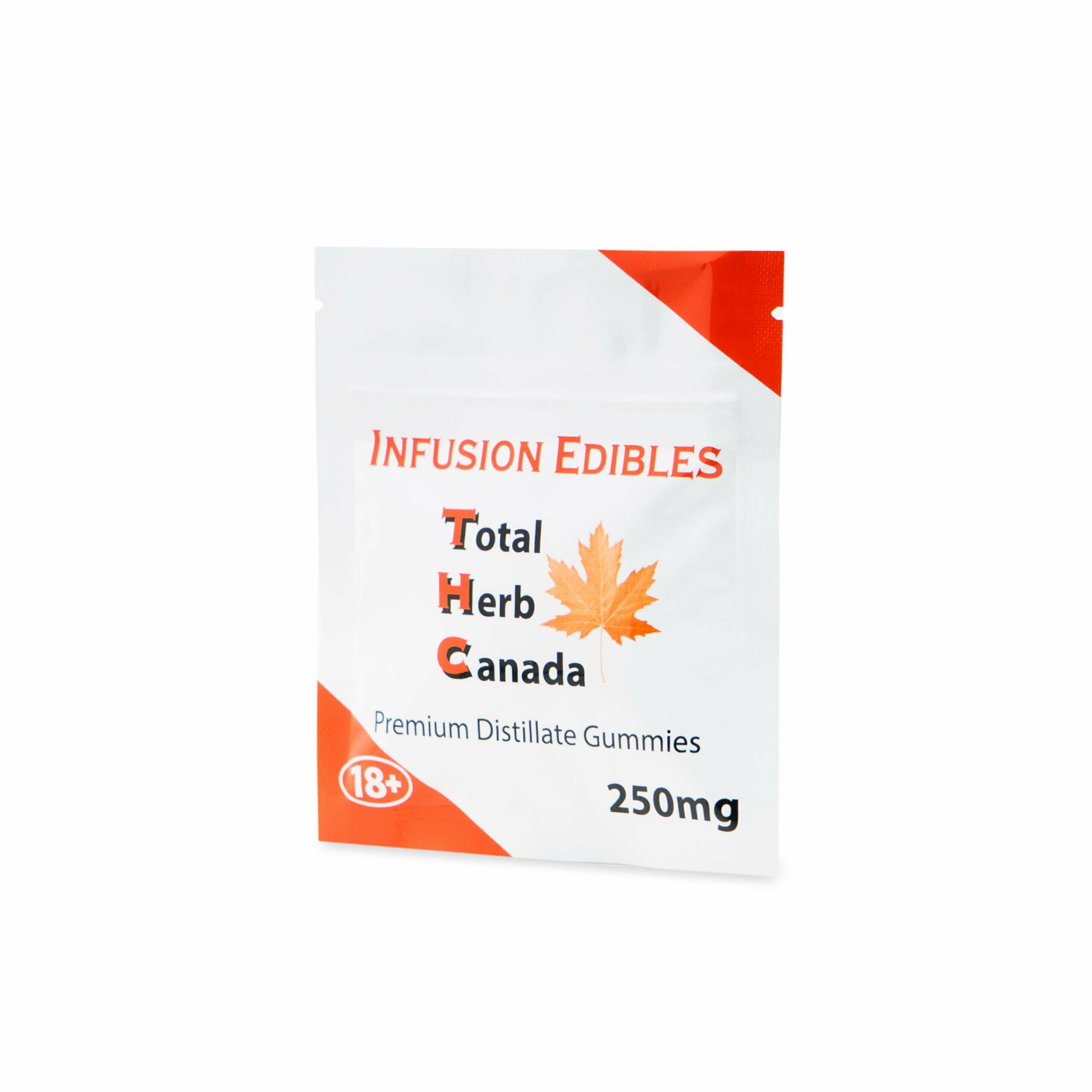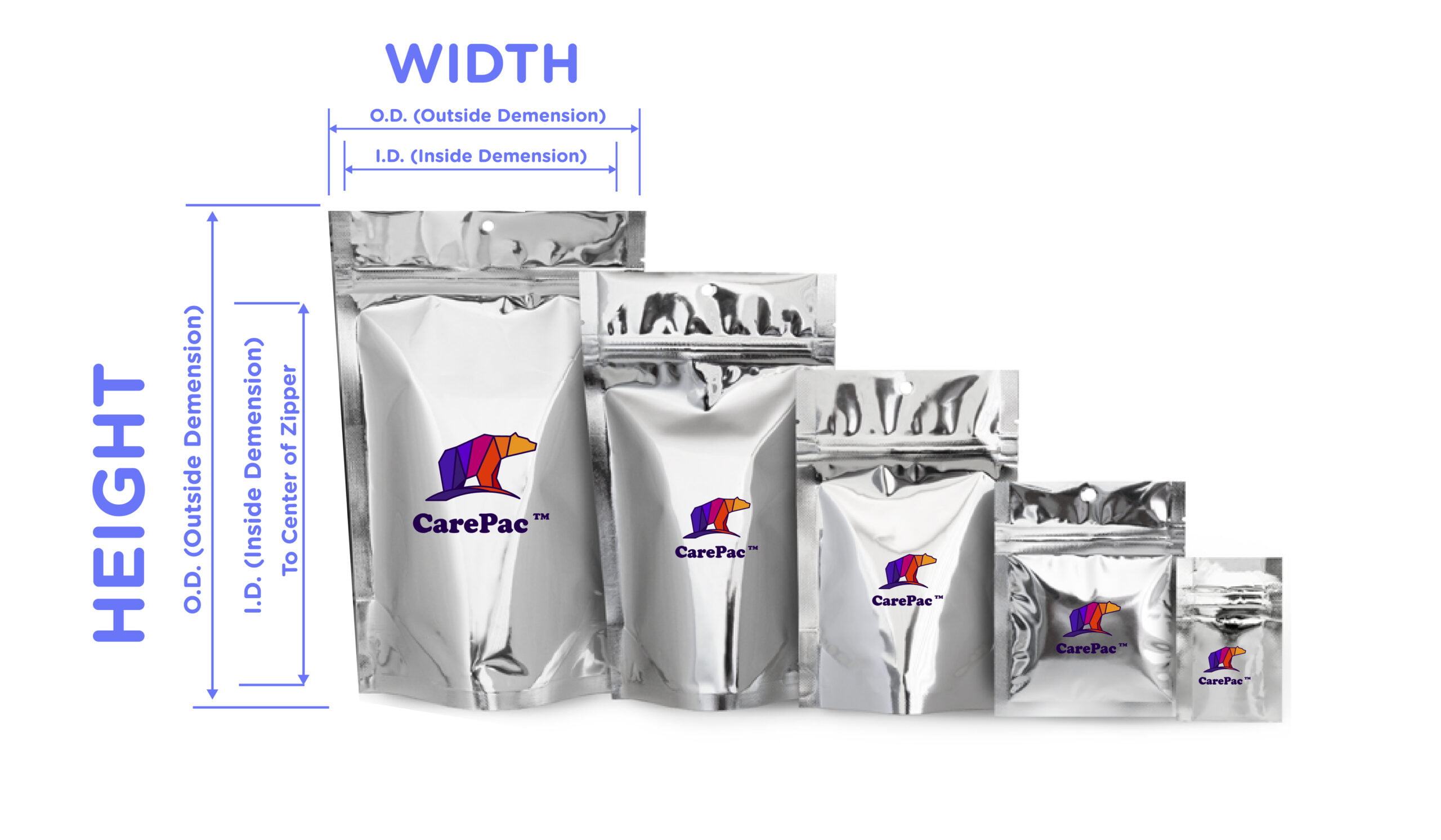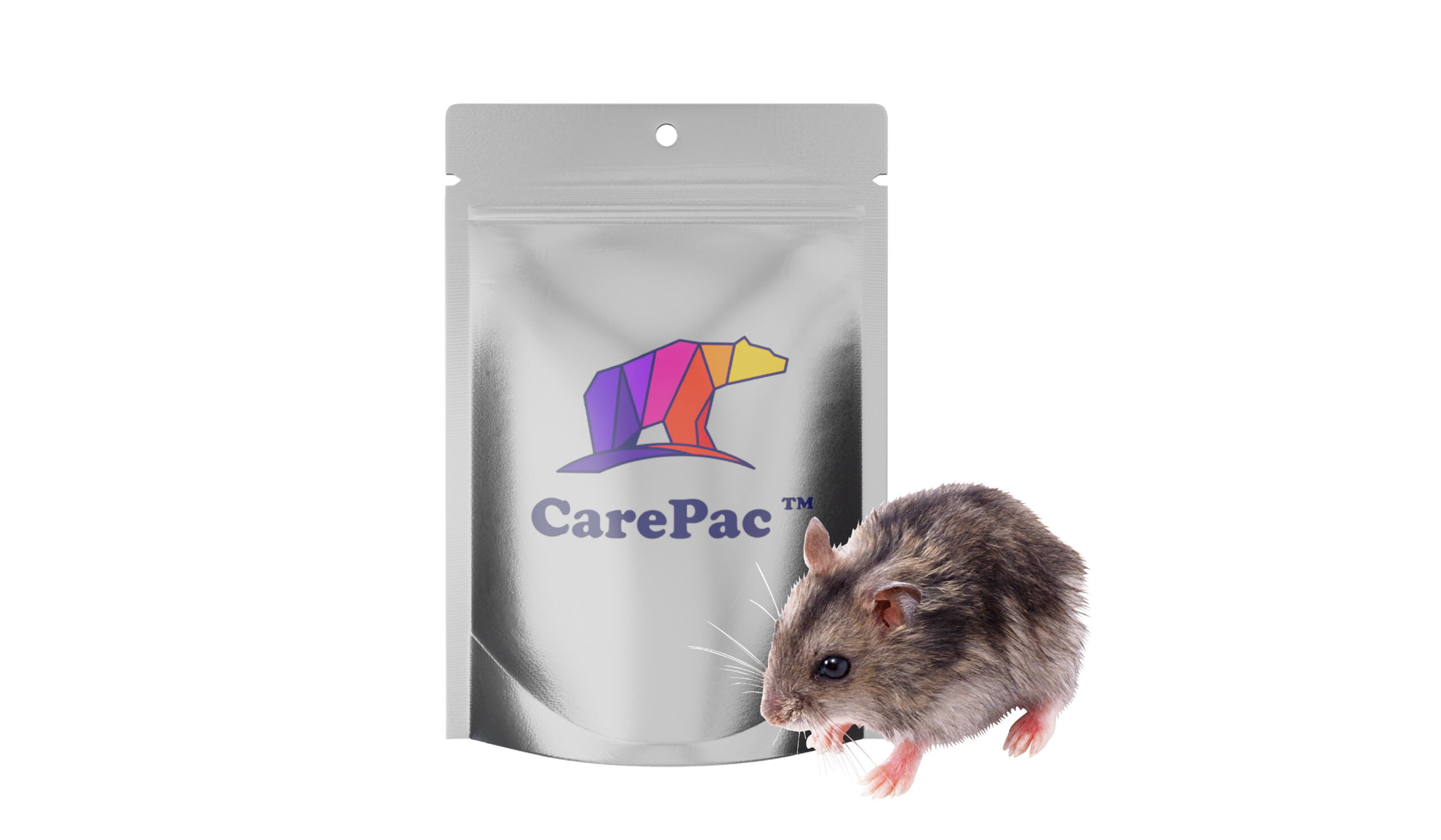No products in the cart.
What Are Mylar Bags?
Mylar bags, you’ve probably heard the term used to describe the type of bags that you use to package your product. From trail mix to protein powder, from coffee to cannabis, custom mylar bags are one of the most common types of barrier packaging. What most people don’t know is what Mylar really is.




What is Mylar? How this material is made?
Mylar is the name given to a polyester film trademarked by DuPont in the mid-1950s. Polyethylene terephthalate film (PET) is stretched to acquire a grid-like shape and reduced thickness. As biaxially oriented PET (boPET) or Mylar, the film goes through a high-temperature oven to become crystallized in this form, preventing it from shrinking back to its original condition. Due to its molecular orientation, Mylar has high strength, resistance to extreme temperatures and excellent transparency. Since the film’s surface is so smooth and thin, it can become sticky. This issue was solved by embedding microscopic inert inorganic particles like silicon dioxide in the film’s structure to make handling easier.
The boPET film can also be metallized by vapor deposition: metals such as aluminum and gold are evaporated and applied to the film, forming a thin surface metal layer. Vapor Metallized PET (VMPET) reduces gases permeability and reflects up to 99% of light, including much of the infrared spectrum. Also, this aluminized Mylar can be laminated with polyethylene. The polyethylene layer has a dull appearance, while the aluminized boPET looks shiny. This boPET polyester film provides sealability and improves puncture resistance.
According to DuPont Teijin Films chart, Metallized Mylar offers 140 times less oxygen transmission (OTR 0,5) and 40 times less water vapor transmission (VTR <1) in comparison to Mylar Polyester.
What are the applications for Mylar?
Because of the popularity of Metalized Mylar most people erroneously associate Mylar with the silver-colored film. The appropriate term to be used is actually metalized Mylar MET/PET or VMPET. Here at CarePac we’ve sold millions of bags made of metalized PET, and so we tend only to think of plastic food bags, but Mylar has tons of uses, metallized or not that go beyond the flexible barrier bags we use.
Here are some of Mylar’s other applications:


- Cover: protecting maps, archives, documents, medical records, comic books, photographs.
- Decoration: metallized boPET can be used as mirror-like surfaces on book covers and clothing.
- Insulating material: since Mylar is an electrical and thermal insulating film, it’s used in houses, tents, NASA’s spacesuits, emergency blankets, fire shelters, firefighters’ suits.
- Solar, marine and aviation: windows blinds, sunblinds; sails for sailboats, hang gliders, paragliders and kites; solar panels, solar cooking stoves.
- Science: coating of Apollo’s lunar module, telescopic solar filters, in CT scanners attenuating the x-ray beam received by the patient.
- Electronic and acoustic: used in the diaphragm in headphones, loudspeakers and microphones; magnet recording tapes, vinyl records, compact discs, floppy discs.
- Miscellanea: Balloons, confetti, roll signs, nail polish with glitter effect, transparency, tags, survival storage.
- And last but not least, as a substrate used in flexible barrier packaging.
What are Mylar's benefits?
High tensile strength, temperature resistance, chemical stability, protection against gases, odors, and light are unique features that make Mylar the number one choice for long-term food storage.
That’s why you see so many food products stored in metallized Mylar bags, also known as Foil pouches, due to the aluminum layer in them.
Good Dry Food Options for Storage in Mylar Pouches
Great food options that can be safely stored in Mylar bags are:


2- Products that must be kept dry, and have little moisture.
Here are some examples:
- Jerky
- Oatmeal
- Powdered milk, juice
- Pet food
- Seeds
- Crackers
- Wheat berries
- Flour
- Dried corn
- Spices
3- Products with low moisture contents.
Here are some examples:
- Dried Coconut
- Herbs
- Chips
- Bread mixes*
- Cake mixes*
- Tortilla mix*




3- Low-fat foods.
Here are some examples:
*only dry mixes (where you add water during preparation).
One thing to know is iodized salt may become yellow over time, but that doesn’t change its quality. Coffee beans release gas over time. They can be stored for a long time, but if using mylar bags to store coffee it’s essential to use a pouch with a valve to prevent gas accumulation and bag bursting. Most food and snacks can be stored long term between 6 months to 2 years. Dealing with light and oxygen can expand your shelf life and depend on the type of product you have, the time varies as well.
Bellow, there is a list to give you an idea of how long each food can last:
Common Mylar Bag Food Storage Times* |
|---|
Less than one year:Nuts, crisps, chips, chocolate, candy, dried eggs, crackers, nut butter. These food items are not ideal choices for long-term storage due to high moisture and oil content Brown rice has higher oil content and shorter shelf life. One alternative is to consume these items more often since they expire faster than grains. |
1 to 3 years:Dehydrated meat (beef jerky), yeast, dry biscuits. |
3 to 5 years:Baby milk/formula, cornmeal (maize flour), herbs (ground), powdered milk (full-fat), sprouting seeds |
5 to 10 years:Alfalfa, gluten, granola, whole herbs, millet, mung beans, quinoa, peanut butter powder, powdered milk (semi-skimmed), powdered egg, rye, unbleached flour, wheat flakes |
10 to 20 years:Black turtle beans, black-eyed peas, buckwheat, butter/margarine powder, chickpeas, cocoa powder, Durham wheat, flax, white flour, whole wheat flour |
20 to 30 years:Coffee (instant), freeze-fried fruit and vegetables, legumes (kidney beans, lentils, lima beans, split peas), powdered milk (skimmed), grains (rolled oats, hulled oats, white rice, dry pasta), tea (bags or loose), potato flakes, dried onions Indefinitely:Baking soda/powder, honey, salt, sugar, salt, cornstarch |
* Shelf life can vary widely, This table is merely for reference. We recommend that you consult a qualified expert to determine the appropriate shelf life statement for your product.
Foods that Should NOT Be Packaged with Mylar
– Any item with a moisture content 10% or more should not be stored in mylar bags. Also, items with the moisture of 35% or more can grow botulism in airless environments and thus require pasteurization. It’s important to highlight that 10 minutes of boiling can destroy the botulinic toxin. Even so, if you encounter a bulging package (which means the bacteria is growing inside and producing toxins), do not eat what is inside the bag! Please note, we do offer film substrates that are a good choice for high moisture content food items. Please contact us for details.
– Fruits and veggies can be stored but only if dehydrated.
– Milk, meat, nuts and legumes will get rancid over more extended periods.
Advantages of Storing Dry Goods with Mylar
Mylar bags protect against light exposure, moisture, insects and oxidation. These characteristics are responsible for maintaining the product fresh with its original aroma and flavor through long shelf life. Its variety of sizes allow you to pack 1 gram even to fit a 5-gallon bucket. And it can be sealed at home with a simple process, as we will show you later on.
Determining Mylar Quality
One thing to be aware of is the quality of the bag you are using. Using thin and frail plastic pouches can hurt the effectiveness of your food storage, compromising shelf life and freshness. When choosing your bags, you should check thickness and certifications.
How Our Mylar Bags Are Different
The thicker the film (mils), the higher is the barrier strength. We provide films from 1.5 to 6 mil thick. At CarePac we generally recommend 110um in thickness for most mylar bag uses which is a little over 4 mil in thickness. If the bag is very large, we will even increase that to 5 or 6 mil in total thickness and enhance it with additional materials to the lamination structure. Certain dried goods like potato chips can get by with a thinner bag film thickness, like candy bars, or single serve packaging.
About Certifications, some are required and we made sure our products got them all covered.
Here are the certificates our products have that you need to be aware of:
- FDA 21 CFR 73
- CFR Condition B
- RoHS
- SR 817-023-021
- EU 10/2011
- REACH
- CA Toxins in Packaging / Prop 65
- BPA/TSE/BSE
- Consortia SLT
- Kosher
- CONIG.
For Child Resistant Mylar packaging:
- FDA 21 CFR 73
Finally, there are even more regulations and certifications that are important depending on your use of the mylar bags.
- EN1342
- ASTM D6400
- 7H0037
- U.S.FCN No 1574
- EU10/2011
- CA Toxins in Packaging / Prop 65
- BPA/TSE/BSE
- Consortia SLT
- Kosher
- CONIG
Customize your Mylar Bag Size
Since Mylar is a flexible film, you can find bags in multiple sizes. We at CarePac can create any custom size from about 1”x1” to a 55 gallon drump liner, and everything in between. We make all mylar style bags to order on sizing, so you determine the exact size you want. Generally mylar bags range in size from (2″ x2″) to X-large (20″ x30″ x8″).
Our ability to totally customize the size of your mylar bags means you never need to worry about not finding the right size you need! We can make you mylar bags almost any size you want. Looking for a 1-Gallon Mylar Pouch (10″ x 14″)? We got it! Need 5-Gallon mylar bags (20″ x30″)? We can make it for you! If you are not sure about which size and material are the best for you, talk to one of our specialists. They will be happy to help you find the exact one you need! Or you can order samples here.


Mylar Is NOT Rodent Proof!
We talked about this before, but it’s good to remember when your storage items are at stake. It is advisable to keep Mylar bags inside food grade buckets for more security and protection, especially if you are worried about rodents accessing your storage. Of course, you should also take care of your mice issue as soon as possible. The addition of other materials to the Mylar lamination will help to prevent rodents.


Protecting Mylar in Storage and Transport


Getting the product to your retailer or end user without damage is always a major hassle for any manufacturer. Mylar bags can help protect your product from UV, Oxygen, and Moisture loss, but the bag itself will need protection from drops, punctures, and other transit damage.
The most common problem for mylar bags is blow-outs. This is where the bag material tears or explodes because the pressure applied to the bag exceeds the mylar bag’s tensile strength. Common solutions to mylar bags blow-outs in transit include.
- Reinforcing the film with other plastics to make the mylar bags stronger
- Packing fewer bags per box, or providing padding around the bags.
- Leaving less air in the bag after loading it so if exposed to an altitude change (like air transport) the bag doesn’t blow out.
- Reinforcing the material with other plastics to make the mylar bags stronger
- Packing fewer bags per box, or providing padding around the bags.
- Leaving less air in the bag after loading it so if exposed to an altitude change (like air transport) the bag doesn’t blow out.
How do I Use Mylar for food packaging?
Mylar bags are simple to use and, as we have been demonstrating, are one of the best options for long term food storage. The plastic film can avoid exposure to moisture, air and light while keeping the product’s aroma, flavor, and freshness inside. Although, one thing you must learn how to handle is the air that comes in when you fill the bag.
How to seal Mylar and what are the requiring tools?
Mylar bags can be sealed using a impulse Sealer, vacuum sealer, or a heat sealer.
The vacuum sealer sucks all the air inside the bag. The air outside collapses the bag against the food due to the vacuum inside the pouch. When using mylar bags with a chamber vacuum sealer it is important to ensure that the bag has been reinforced with additional materials such as nylon.
Heat sealers can be impulse heat sealers, foot peddle sealers, or semi-automatic band sealers. All are options you can use. However, oxygen absorbers (OA) are sometimes used with mylar bags when the contents are very sensitive to oxygen, or when you intend to extend the shelf life of the product. Desiccants and oxygen absorbers help to ensure the longest shelf life.


Oxygen absorbers for Mylar Bags
Oxygen is the great villain of shelf life and will alter the flavor, destroying vitamins, fueling mold and aerobic bacteria to grow, and making tiny pest eggs that are not visible to the naked eye to hatch. If you choose to add this step while sealing your mylar bags, it’s crucial to add enough oxygen absorbers as needed. In this case, it is best to go for too many rather than too few. Absorbers are very cheap and using extra ones won’t hurt at all. However, using fewer than needed can cause you to waste a lot of precious products.
Bellow, there is a simple guideline that you can follow:
Food Type | 1 quart | 1 gallon | 5 gallon |
|---|---|---|---|
Beans, lentils, split peas | 125-150cc | 500-600cc | 2500-3000cc |
Rice | 100cc | 400cc | 2000cc |
Flour | 100cc | 400cc | 2000cc |
Instant mixes and powders | 100cc | 400cc | 2000cc |
Coffee beans | 100cc | 400cc | 2000cc |
Pasta | 125cc | 625cc | 2500cc |
Cereal | 125cc | 625cc | 2500cc |
Instant potatoes | 125cc | 625cc | 2500cc |
Foods that Should NOT Be Stored with Oxygen Absorbers (OA)
Salt and sugar can become rock hard when stored with OAs. Brown sugar also has too much moisture to be held with them.
Baking soda, baking powder, pancake mixes, and yeast have some controversy since some believe a chemical reaction may occur and alter leavening products that will lose their effects.
Vacuum Sealable Mylar. Do bags need to be vacuum sealed?
This is a common doubt people have. So Mylar bags can be vacuum sealed. Both sealing processes augment shelf life and storage period. Although, combining them can enhance the results. Again when vacuum sealing makes sure you are using a reinforced mylar bags or have performed adequate testing. If you vacuum seals the bag too strongly the film can rip.
The best vacuum sealer machine can remove 99.5% of the oxygen inside the bag while oxygen absorbers remove up to 99.9%.
Where to buy Mylar?
Knowing about everything you need to know about Mylar bags, you are now aware of the importance of choosing a trustworthy place to buy your pouches. Contact CarePac specialists today and discover why you should choose us.


